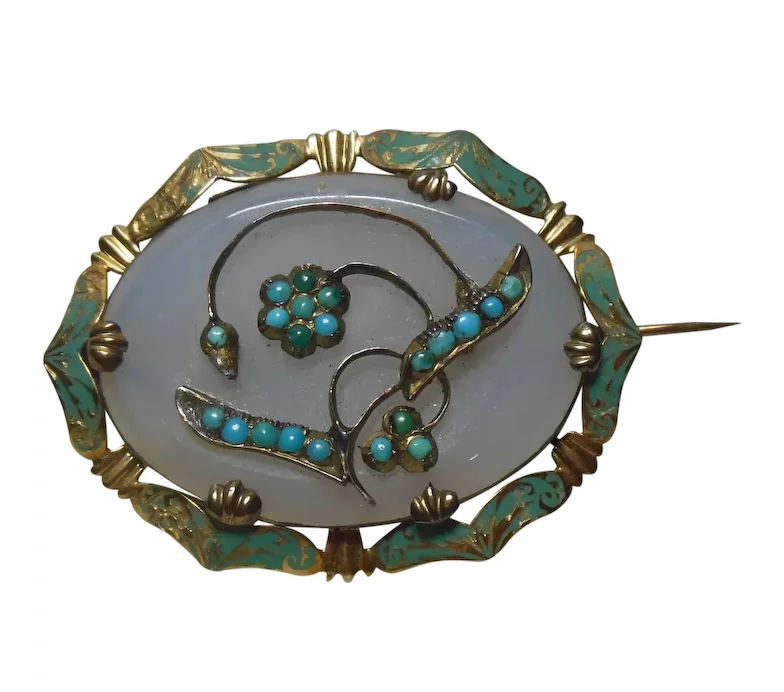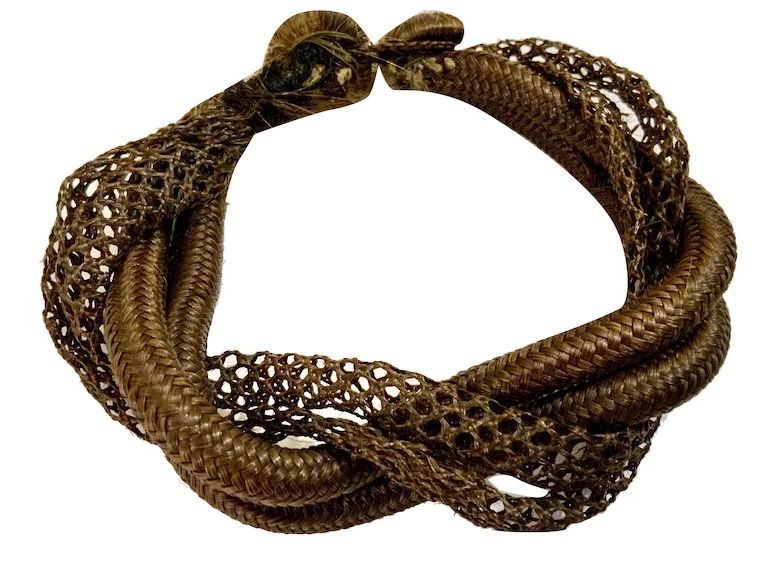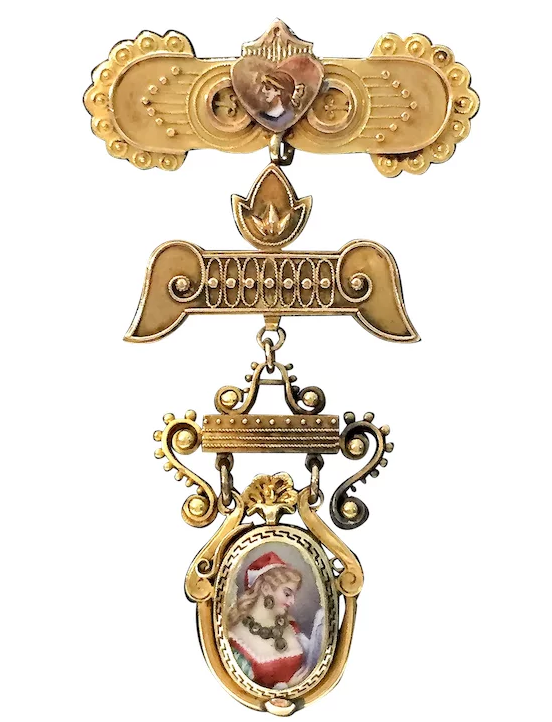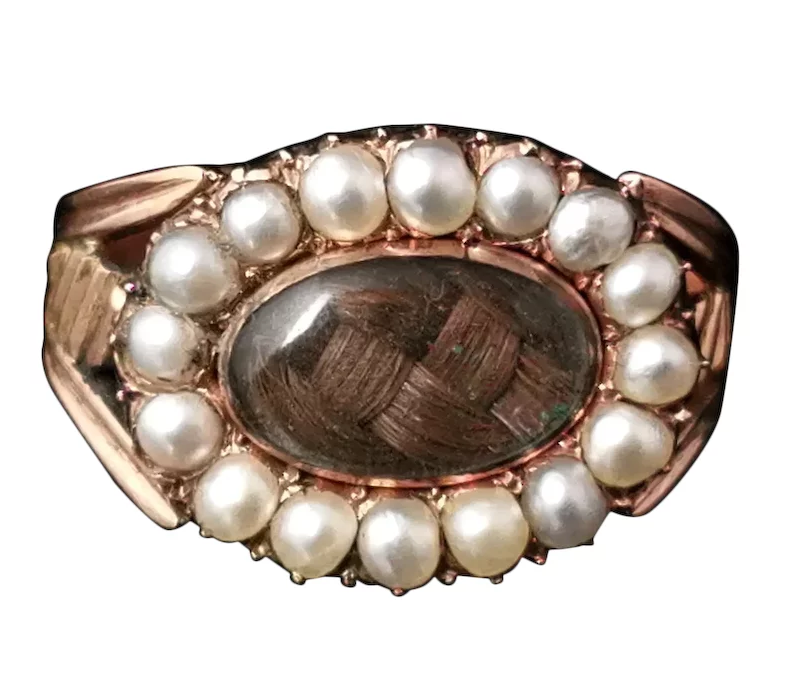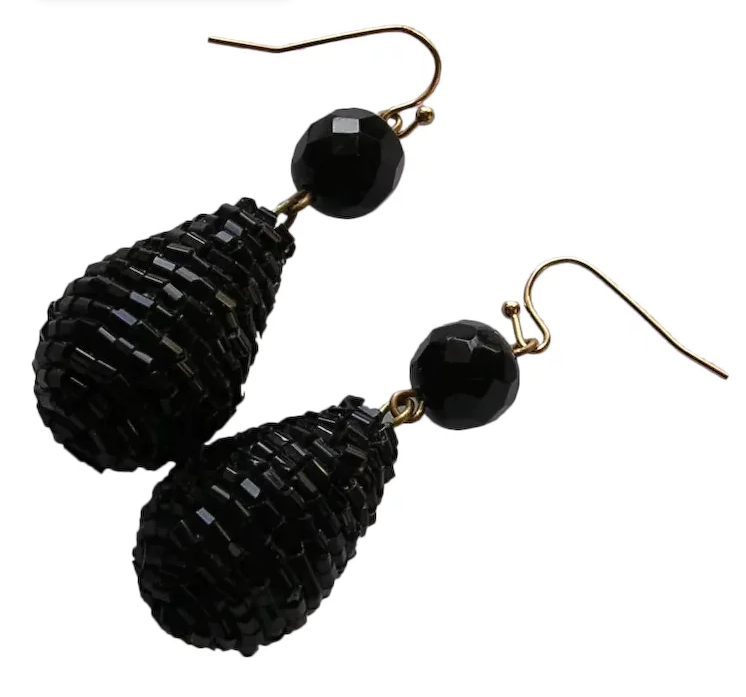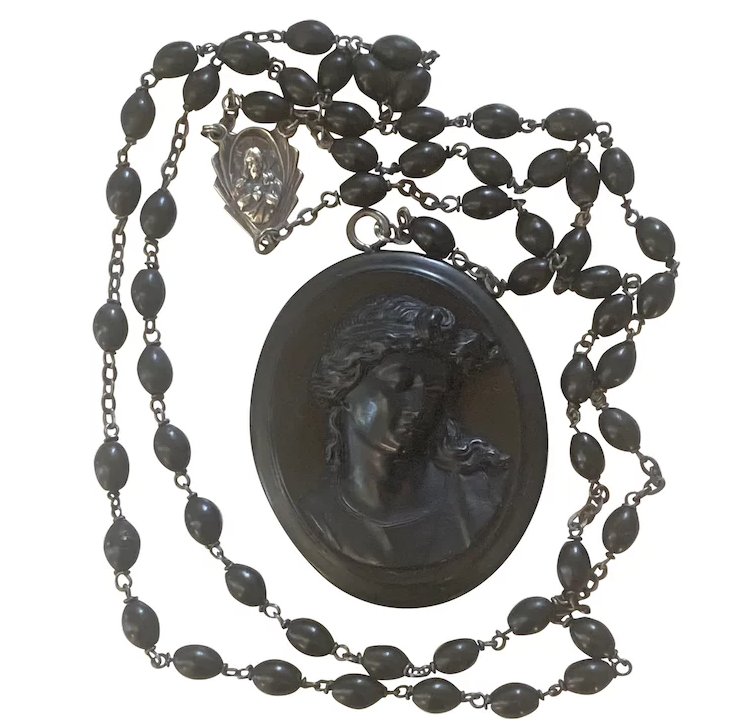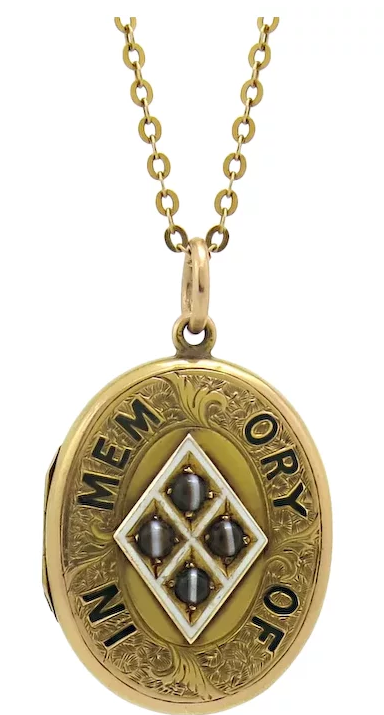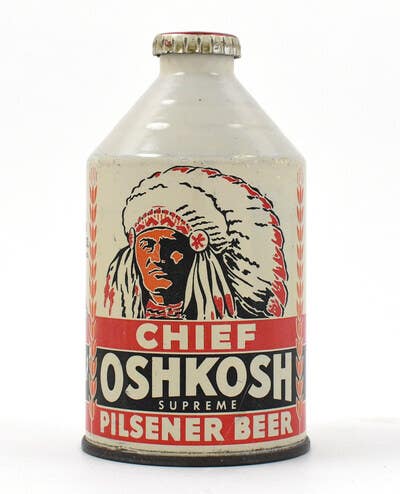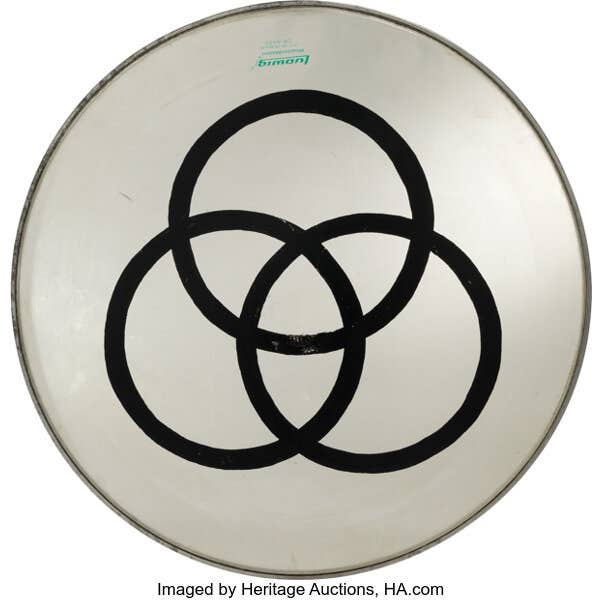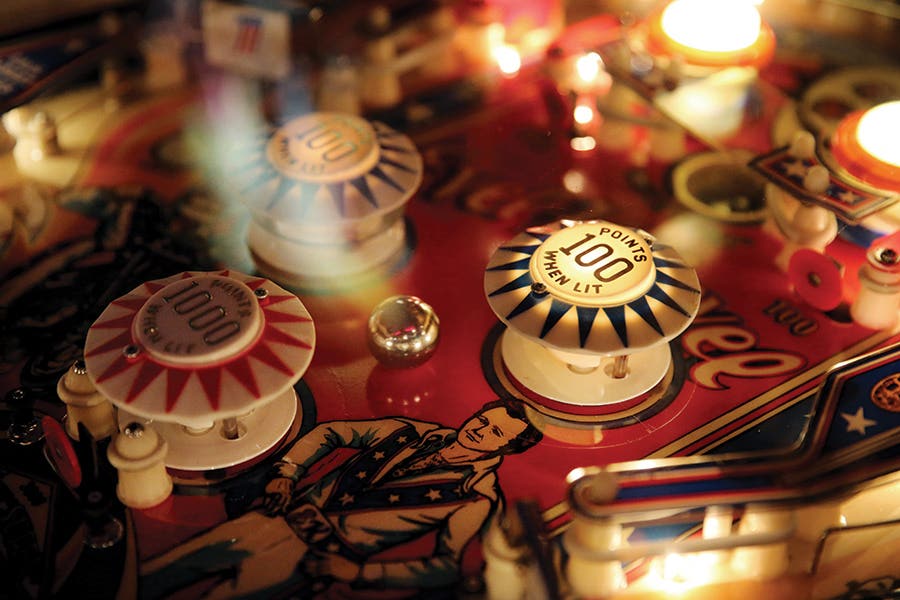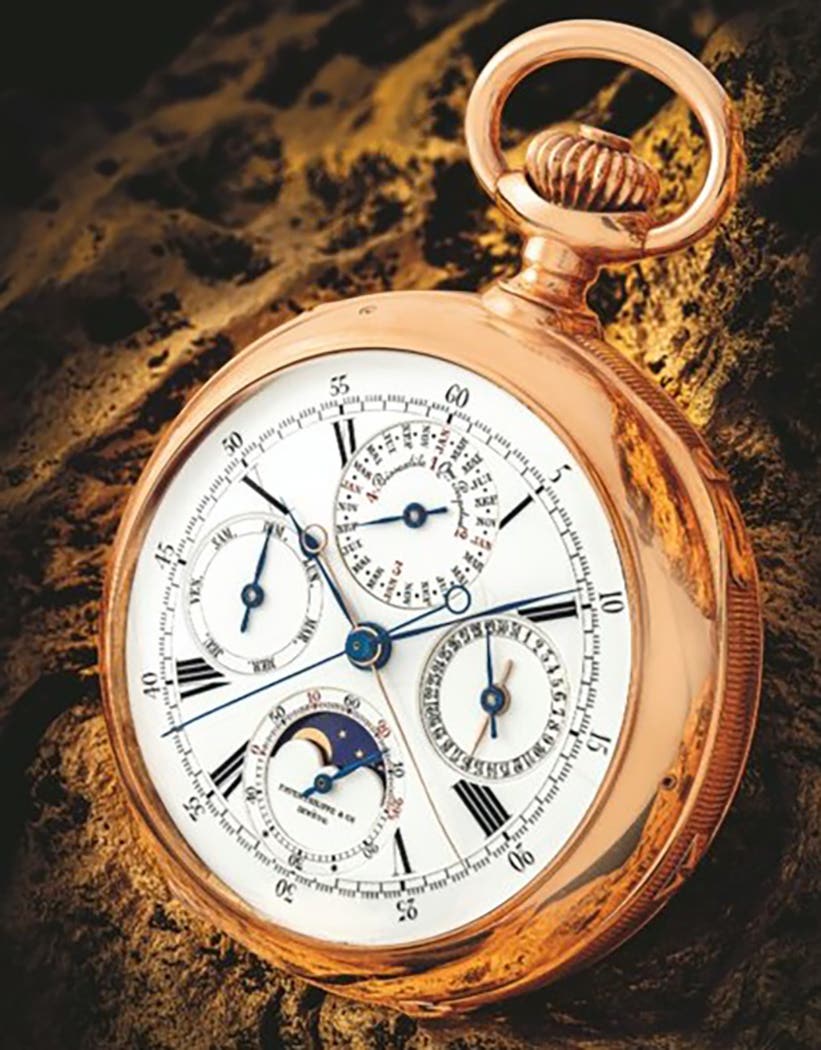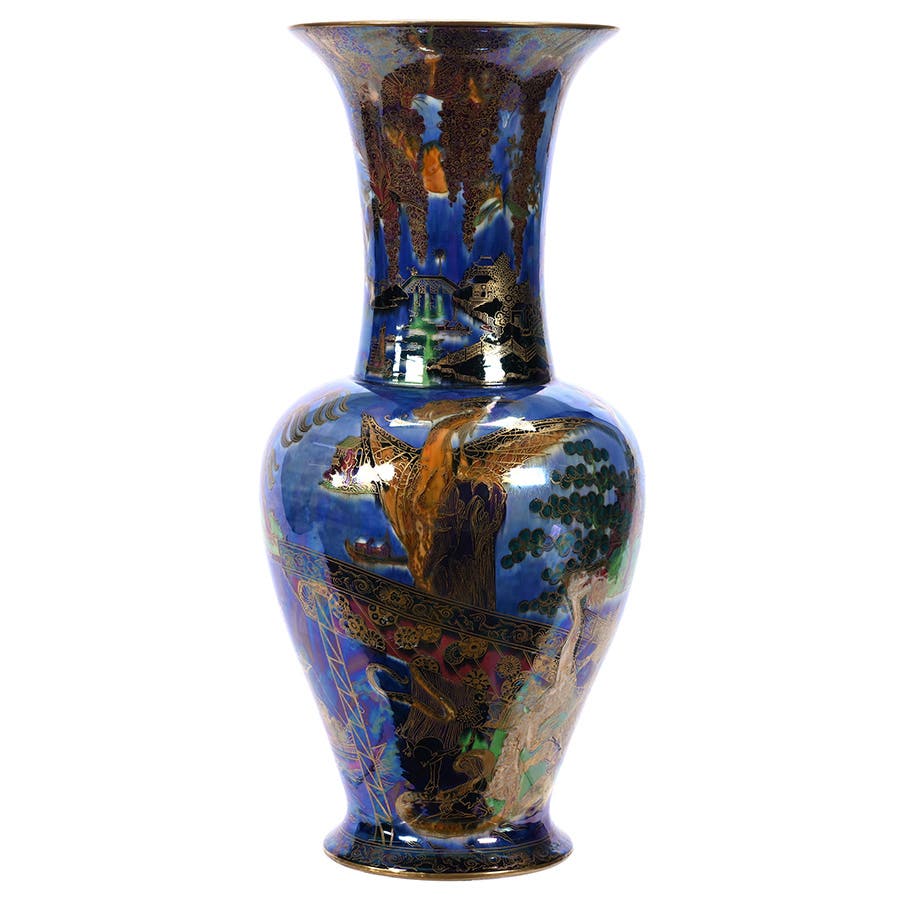Queen Victoria’s Mourning Jewelry
The monarch of mourning made memorial jewelry fashionable, and in the time of COVID-19, there is renewed interest in Victorian pieces made for remembering loved ones.
Following Prince Philip’s death on April 9, Queen Elizabeth II entered an official eight-day mourning period for her beloved husband of 73 years. At his funeral on April 17, she accessorized her all-black ensemble with a large diamond-and-pearl brooch that has sentimental and special significance for her.
Known as the Richmond brooch, the chrysanthemum-shaped piece originally belonged to her grandmother, Queen Mary. According to Express UK, the symbolic jewelry was gifted to Mary as a wedding present in 1893 by the town of Richmond, where her family had lived for two decades, and she wore it on her honeymoon. Queen Elizabeth has worn it to many formal engagements over the years with Prince Philip, including military remembrance events to honor people who have lived a life of service, much like her late husband. The brooch features a center pearl and a drop pearl, which is detachable, and the queen chose to not wear it for the funeral.
Jewelry also held special significance and meaning for Queen Elizabeth’s great-great-grandmother Queen Victoria, especially after the death of her own beloved husband, Albert. She made mourning jewelry fashionable, and in the time of COVID-19, there is renewed interest in Victorian pieces made for mourning and remembrance of loved ones.
After the death of her husband Prince Albert in 1861, Queen Victoria helped codify the nuances of grief fashion and maintained her legendary identity as the “perpetual widow.” She famously and publicly expressed her sorrow over the next four decades by shrouding herself in black crepe and lots of jewels, commissioning countless pieces to remember her dearly departed husband and other loved ones. Four of her personal pieces were recently sold at Sotheby's.
The tradition of wearing mourning jewelry dates to the 16th century, where macabre pieces, usually adorned with skulls and crossbones, would serve as a tangible reminder of death — a physical embodiment of the concept of memento mori (remember you must die). However, by the 19th century, mourning had taken on a different tone, as the emphasis shifted to the individual and the celebration of love, sentimentality and remembrance. This new mood was inspired by the monarch herself, whose name has become synonymous with the act of mourning.
Over the course of her long reign, Queen Victoria suffered many losses, spending decades mourning not only Albert, but also her mother and three of her children. The queen set the example for her court and was an admired public figure, and so mourning jewelry became among the most fashionable commissions and had lighter and more sentimental motifs of hearts and flowers, and miniature portraits of the deceased.
“Queen Victoria was the biggest jewelry influencer of all time,” Rebecca Selva, creative director of Fred Leighton, told Town and Country Magazine. “She made mourning jewelry fashionable and imbued the pieces with romance. And everyone in court followed suit.”
Four of the queen’s personal and previously unseen pieces that brought her solace were up for auction for the first time at Sotheby’s London in March, courtesy of the collection of her great-great-granddaughter Patricia Knatchbull, also the first cousin of Prince Philip and the daughter of Britain’s last Viceroy of India, Louis Mountbatten. All of the pieces sold for tens of thousands above their estimates.
“She and Albert were huge jeweler lovers,” said Kristian Spofforth, head of the jewelry department at Sotheby’s London. “After Prince Albert’s death, she thought that by continuing their passion for jewels, it was keeping that love alive.”
And so the royals’ great love inspired a more sweet and subtle style of mourning jewelry during this era, with symbolic cherubs, clouds, crosses, and anchors (which denoted unwavering faith), and pearls as a symbol of tears. This spirit is reflected in the pieces that sold.
On December 14, 1878, the anniversary of Prince Albert’s death, Victoria’s third child Alice died of diphtheria at the age of 35. Princess Alice’s youngest daughter, Princess Marie of Hesse and by Rhine, had also died of the same disease at the age of four. Three of the brooches mark Alice’s tragic passing including an onyx and seed pearl button commissioned by Queen Victoria in 1879, with a portrait miniature of Princess Alice, which sold for $26,294.
An agate and pearl pendant inscribed “from Grandmama VR” as a gift from the queen to Alice’s daughter, Princess Victoria, sold for $33,305; and a hardstone, enamel and diamond cross centering on an onyx heart with “Alice” beneath a coronet sold for $34,821.
The fourth piece was commissioned by Prince Albert circa 1861 for Queen Victoria to mark the death of her mother. An agate and diamond pendant, it opens to reveal a miniature photograph of Princess Victoria of Saxe-Coburg-Saalfeld, later Duchess of Kent, with a touching inscription by the Prince Consort, and sold for $45,264.
Three of the pieces also contain a lock of hair, which Sotheby’s said is a testament to the Victorian belief that hair had a “sacred and immortal quality,” nearly containing someone’s essence. Hair was a way to keep people close to you, even in death.
“You think of Victoria and you think of the great jewels of state, the diamonds, the Koh-i-Noor. These jewels are much more intimate, their value isn’t through large diamonds,” said David Macdonald, Sotheby’s specialist and head of sale for the auction. “Their value lies in the full expression, an emotional, deeply personal expression about loss and love.”
According to the Victoria and Albert Museum, the increasing rigidity of mourning conventions during the reign of Queen Victoria gave great encouragement to the manufacture of black jewelry, which could be highly fashionable and followed the styles of the day. Expensive work in black-enameled gold was made by hand, and jet was much in demand. The workshops in Whitby, Yorkshire, near the main source of the material, produced articles, which often comprised hand-carved details applied to mass-produced bodies turned on lathes. Mass-production methods, and the use of substitute materials, brought mourning jewelry within reach of all but the poorest.
In the 17th and early 18th centuries, another popular expression of remembrance was gold and enamel memorial rings, inscribed with the person’s name and date of their death. These were often purchased by the person in advance of their death and bequeathed to family members and friends posthumously to remember them.
George Washington's death in 1799 sparked a greater interest in mourning jewelry in America, according to the Metropolitan Museum of Art, which has a collection that includes a gold mourning ring, circa 1800, with an enamel portrait of the founding father. Other popular types of jewelry included lockets with human hair and miniature portraits.
There has been a renewed interest in mourning jewelry in the past year due to the pandemic — and because people have been feeling more emotionally expressive and sentimental during this time.
“Mourning jewelry speaks to the feeling that life is precious, and it speaks to where we are now,” Selva told Town and Country Magazine. “We are in this romantic phase. People are creating stories with their jewels, stacking and layering with charms and talismans, and mourning jewelry is full of stories.”
“Mourning jewelry seems to appeal to a certain Goth mentality,” said Ronald Kawitzky of DK Bressler & Co. in New York. “It’s a subset of Victorian and Georgian jewelry that is interesting. It appeals to a certain melancholic strain that runs through our society. Black dresses, white and black, and all of that stuff in terms of general societal gloom. There was a time when no one wanted to touch jewelry with someone’s hair in it.
Now it’s popular.”
Mourning jewelry has a dark, elegant beauty and we share a mourner’s grief when we see it. Jewelry collectors value it, and museums exhibit it. Continuing Queen Victoria’s tradition, it remains a special and sentimental way for us to commemorate who we have loved and lost.
Mourning Jewelry At RubyLane.com
Collectors have a great variety to choose from when it comes to antique and vintage mourning jewelry.
There are memento mori pieces with skulls as a mourning motif; black bead and jet necklaces, bracelets, brooches, pendants, rings, and pins that have an elegant sadness to them; elaborate hairwork jewelry is popular, and weeping willow designs and neo-classic motifs appear in many pieces. Although onyx and jet are the typical mourning gemstones, rhinestones, pearls, and glass are also popular and some jewelry is engraved with lettering. Almost any flower, animal, or object such as a heart or cherub in some of the elaborate mourning pieces has a specific symbolic meaning.
RubyLane.com has more than 1,000 pieces of mourning jewelry for sale, ranging from black-beaded brooches under $20 to antique lockets and rings of diamonds, silver, pearls and Stuart crystal ranging from $1,000 to $6,000. This is just a small sampling of pieces offered:
